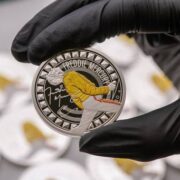8 lucky savory dishes for Chinese New Year—and where to get them

Rooted in traditional beliefs and superstitions that have existed for more than 2000 years, many Chinese dishes have symbolic meanings arising from their shapes, colors, historical background, and even name pronunciation. And whenever there’s a special occasion, they are relied on to hopefully attract good fortune.
Chinese New Year is among the festivals where this practice becomes very evident. And typically, the following lucky foods and dishes make it to the table.
Fish
Also known as nian nian you yu, which sounds like the word for abundance or riches, fish is believed to be an ideal entrée as it represents surplus.
Ley’s Kitchen (@leys_kitchen on Instagram), recognized for her array of saucy crab offerings, has Lapu-lapu in Superior Sauce as well as Lapu-lapu Soup with Tofu. The fish is served whole, with the head and tail intact, “representing a strong beginning and a successful ending for the year ahead,” says owner Angel.
Shrimp
Since the Cantonese word for shrimp, “ha,” sounds like laughter, indulging on this crustacean is said to guarantee good spirit and happiness in the coming year. In addition, the curved body of the shrimp symbolizes longevity, especially for the elderly.
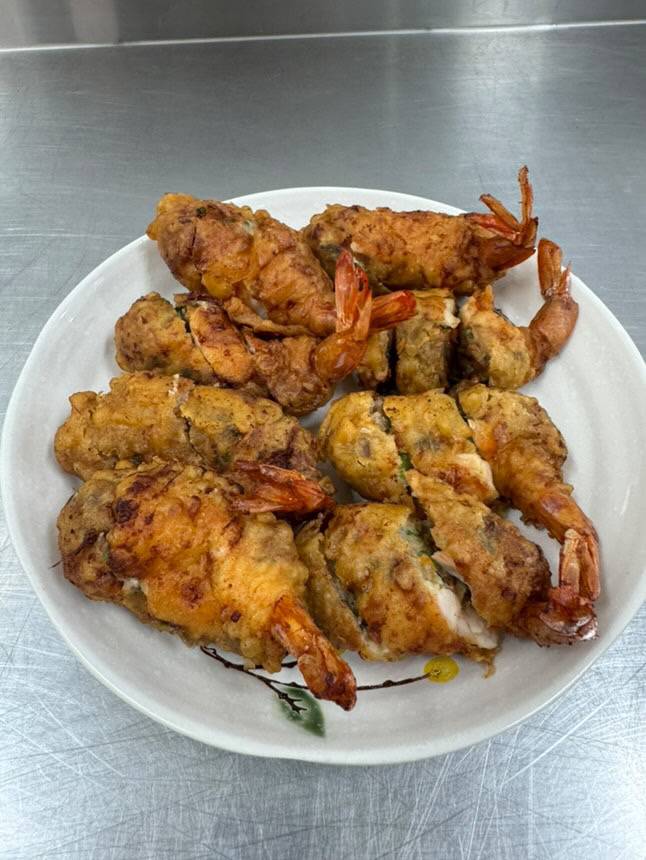
China Mommy’s
(@chinamommyph on Instagram) shrimp relleno aka diok pit he, which is based on their loyal patron’s heirloom recipe, is a savory dish that’s not only satisfying but also believed to be lucky.
Dumplings
Whether boiled, steamed, or fried, the boat-shaped stuffed dough resembles silver ingots, an ancient Chinese currency. That’s why, if you have these dumplings during a celebration, legend says you will amass great wealth.
Suzhou (@suzhoudimsumph on Instagram) has a dimsum platter you can avail of for the coming New Year. And you can order a variety, from siomai and hakaw to steamed wonton and kuchay dumpling, or get 50 pieces of just one, along with the necessary condiments.
Noodles
Many Filipinos serve noodles come birthday parties, believing they promote long life. It’s not any different for Chinese New Year. Since noodles come in long, continuous strands, people eat it to ensure many more years of good life.
Let Auntie Susan’s Cha Misua from The Lazy Susan (@thelazysusan.mnl on Instagram) stir up prosperity. The MSG and preservative-free dish has eight treasure toppings (shrimps, scallops, mushrooms, carrots, fish cake, pork, pork tripe, and egg), and the noodles are cooked in a special homemade broth. A seafood version is also available.
Spring rolls
Since they are cylindrical and golden brown, spring rolls are akin to gold bars. Hence, they are typically served in traditional festivities since the Chinese believe they bring prosperity and wealth.
50 Real (@50realph on Instagram) sells tubs of her ready-to-fry spring rolls—flour wrappers stuffed with glass noodles, black mushrooms, cabbage, carrots, and lots of coriander. The rolls also come with a coriander dip with fish sauce, red chili, and lime juice.
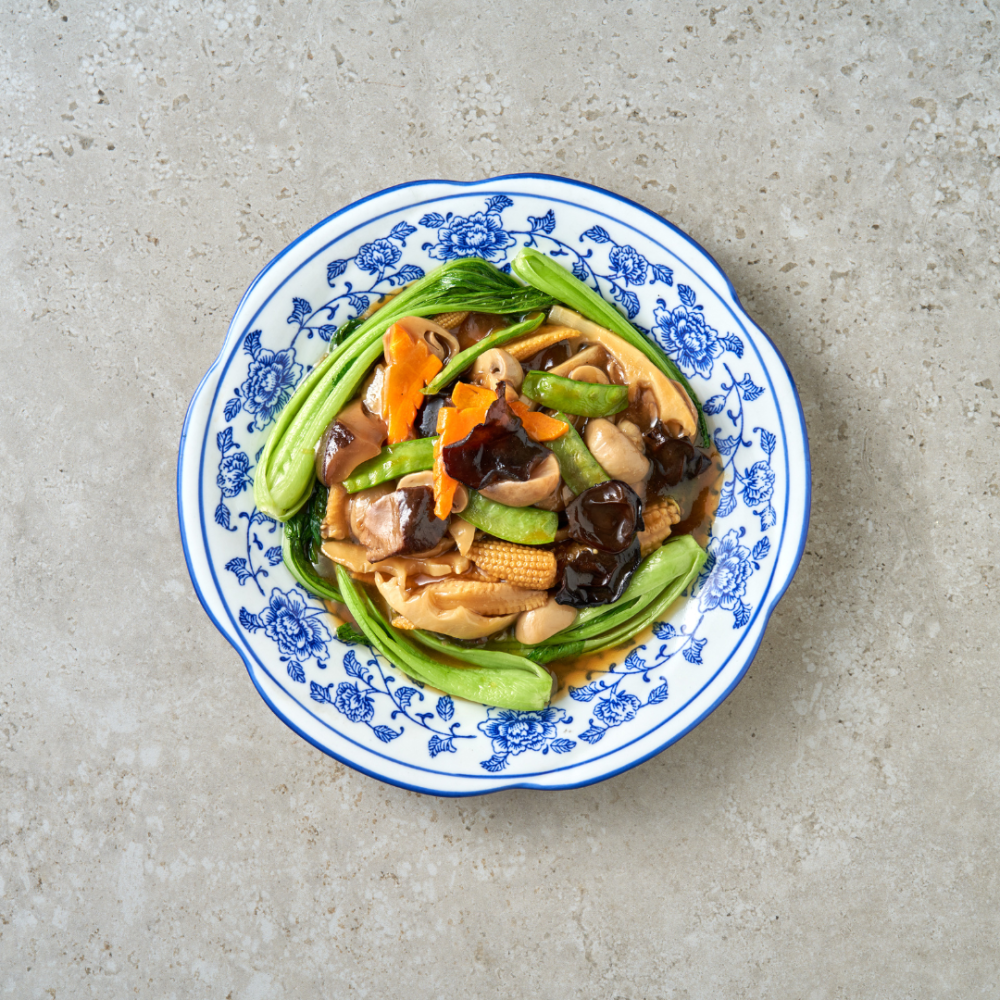
Vegetables
A Chinese New Year’s feast won’t be complete without vegetables as they represent renewal, wealth, and good health. Each vegetable also carries with it a particular good fortune. For example, baby bok choy is said to bring luck and longevity, while gai lan or Chinese broccoli elicits harmony.
Teakha Restaurant (@teakha.ph on Instagram) in Pasig serves a bunch of Chinese dishes including dimsum, hotpot, and fresh seafood. Of course, vegetables are also featured heavily in the menu, among them the Lo Han Chai or Buddha’s Delight, which is a vegetarian dish well known in Chinese and Buddhist cuisine, as well as Taiwan Pechay in Oyster Sauce, and Broccoli with Garlic.
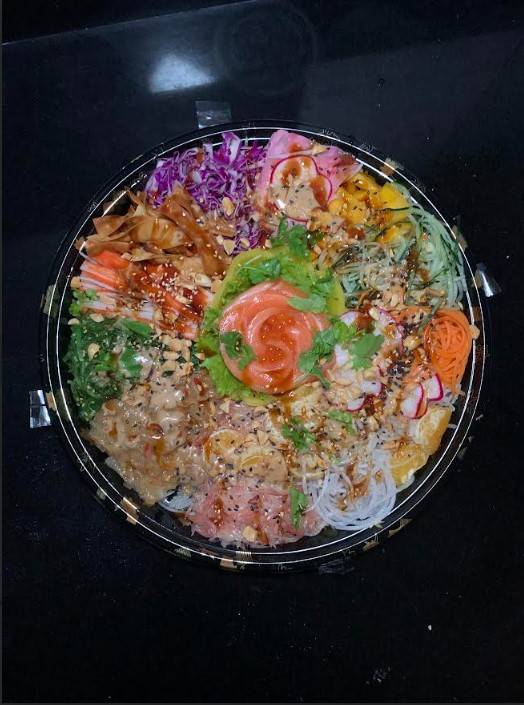
Yee Sang Prosperity Salad
Also called Yusheng, it is an assortment of colorful, auspicious ingredients meant to bring abundance, vigor, and prosperity in the upcoming year. The salad is really delicious, especially when you create your own version with the ingredients you like best.
Polaris Fine Foods
(@polarisfinefoods on Instagram) lets you usher in the Lunar New Year with its Yeesang salad, which now comes with more lucky ingredients that you can toss up (the higher, the better) for good fortune. The components include fish, pomelo, carrots, vegetables, sesame seeds, fish eggs, crushed peanuts, fried wonton, and sauces.
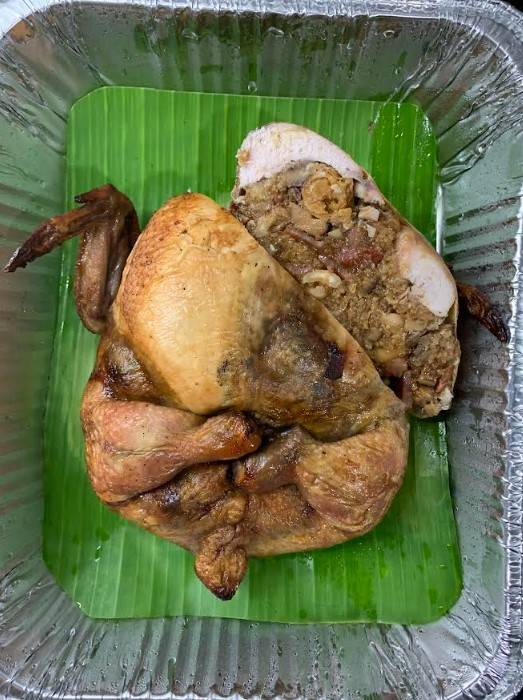
Whole chicken
Aside from the fact that the Chinese word for it is “ji,” which means good luck and prosperity, a whole chicken epitomizes completeness and unity in a family. Presenting it whole is extra important as the head and feet signify reunion.
Dedet dela Fuente (@lechon_diva on Instagram), is known for her stuffed lechon and array of seafood such as shrimp with salted egg yolk spaghetti and fish in golden turmeric sauce. For Chinese New Year, her 8 Treasure Chicken, with chestnuts, salted egg yolk, Chinese ham, cashew, chorizo, mushroom, dates, and sticky rice as stuffing, makes for a satisfying main dish. INQ
Follow the author @fooddudeph on Instagram.
Angelo Comsti writes the Inquirer Lifestyle column Tall Order. He was editor of F&B Report magazine.











